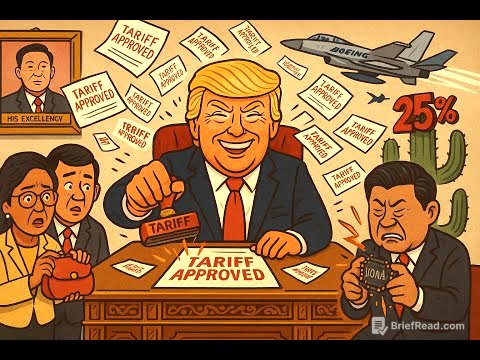TLDR;
This video talks about the resurgence of Coach, a brand that was once a staple in the early 2000s but later faced a decline in popularity. It highlights Coach's strategies to regain its position in the luxury handbag market, focusing on appealing to Gen Z, leveraging social media, and re-releasing classic designs. The video also touches upon the company's acquisitions, leadership changes, and potential risks, while emphasizing its growth in international markets and its focus on core categories.
- Coach's comeback is largely attributed to its appeal to Gen Z consumers.
- The brand has successfully leveraged social media and nostalgia to drive sales.
- Strategic acquisitions and a focus on quality have played a crucial role in the turnaround.
Introduction [0:00]
Coach, known for its monogrammed purses in the early 2000s, experienced a decline in the 2010s, losing about 60% of its market cap between 2012 and 2014. However, the brand has made a comeback, particularly among Gen Z consumers. In 2024, Coach surpassed Michael Kors to become the second-largest in the US luxury handbag market and was named the fifth hottest fashion brand in Q4 2025.
Chapter 1. Building a brand [1:21]
Founded in 1941 as a men's leather goods business inspired by baseball gloves, Coach evolved into a women's fashion house. It became known for accessible luxury in the late 90s and early 2000s. However, the brand suffered due to heavy discounting, over-presence in outlet malls, and a shift in consumer preferences towards competitors like Tory Burch and Michael Kors. Between 2012 and 2015, Coach shares lost 40% of their value due to these factors.
Chapter 2. Turnaround [3:03]
In 2013, Coach recognized the need for a course correction. The company hired Stuart Veveers as the executive creative director to introduce a more youthful aesthetic and moved away from heavy logo designs and discounting. Coach also made acquisitions, including Stuart Weitzman in 2015 and Kate Spade in 2017, and renamed its holding company to Tapestry. Under the leadership of CEO Todd Kahn, Coach's sales grew significantly, driven by popular bags like the Brooklyn, Rogue, and Tabby, and social media campaigns with celebrities. The brand leveraged the Y2K fashion trend by re-releasing classic designs and offering bags at various price points.
Chapter 3. Opportunities and risks [7:10]
Coach generates about 60% of its sales in North America, with growing international appeal, especially in Asia. The brand faces risks from the rise of direct-to-consumer brands and potential tariffs on goods manufactured in Asia. However, Coach has a diversified supply chain and limited exposure to China. Looking ahead, Coach aims to diversify its offerings while focusing on its core categories, targeting the growing number of women who can afford luxury handbags.









